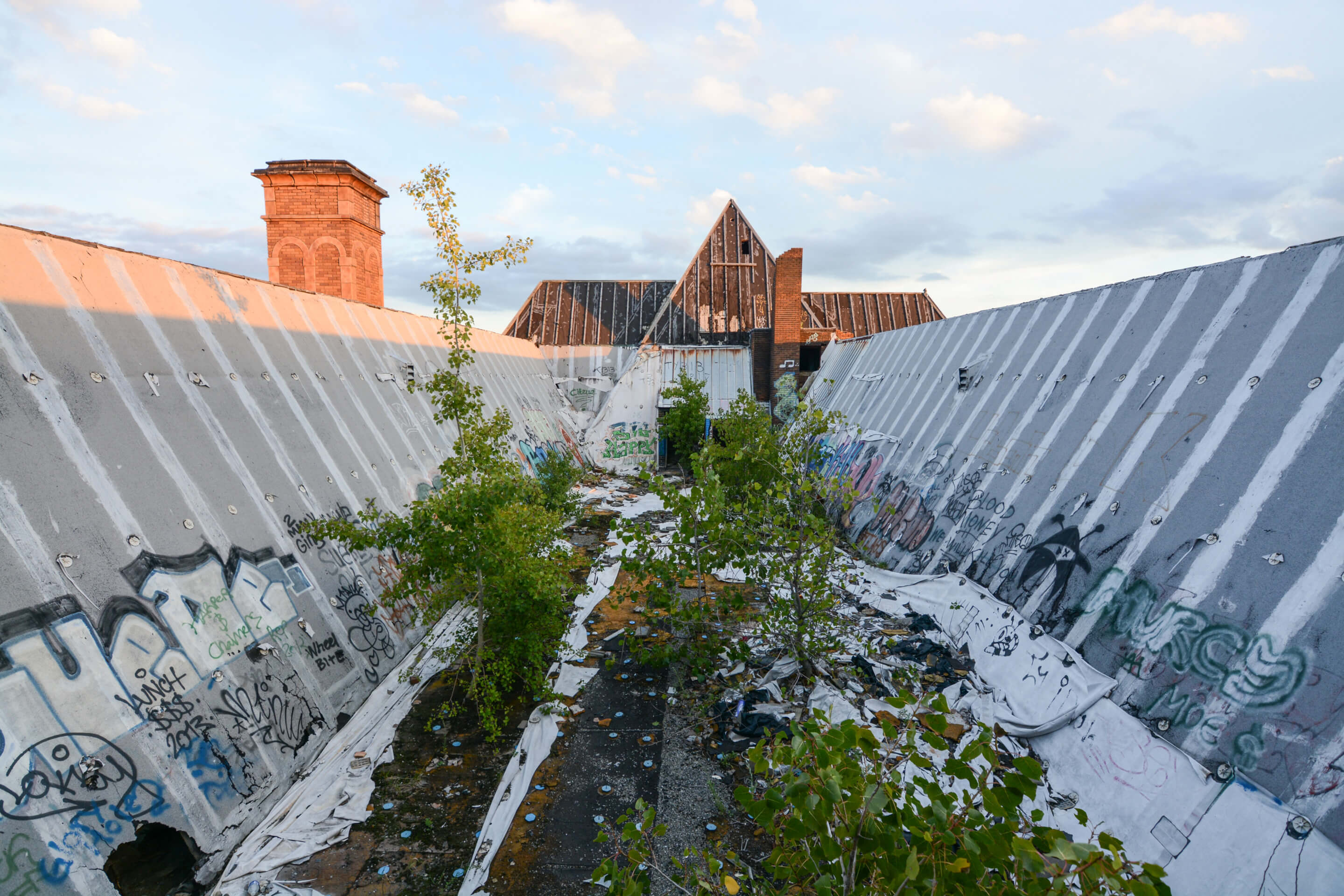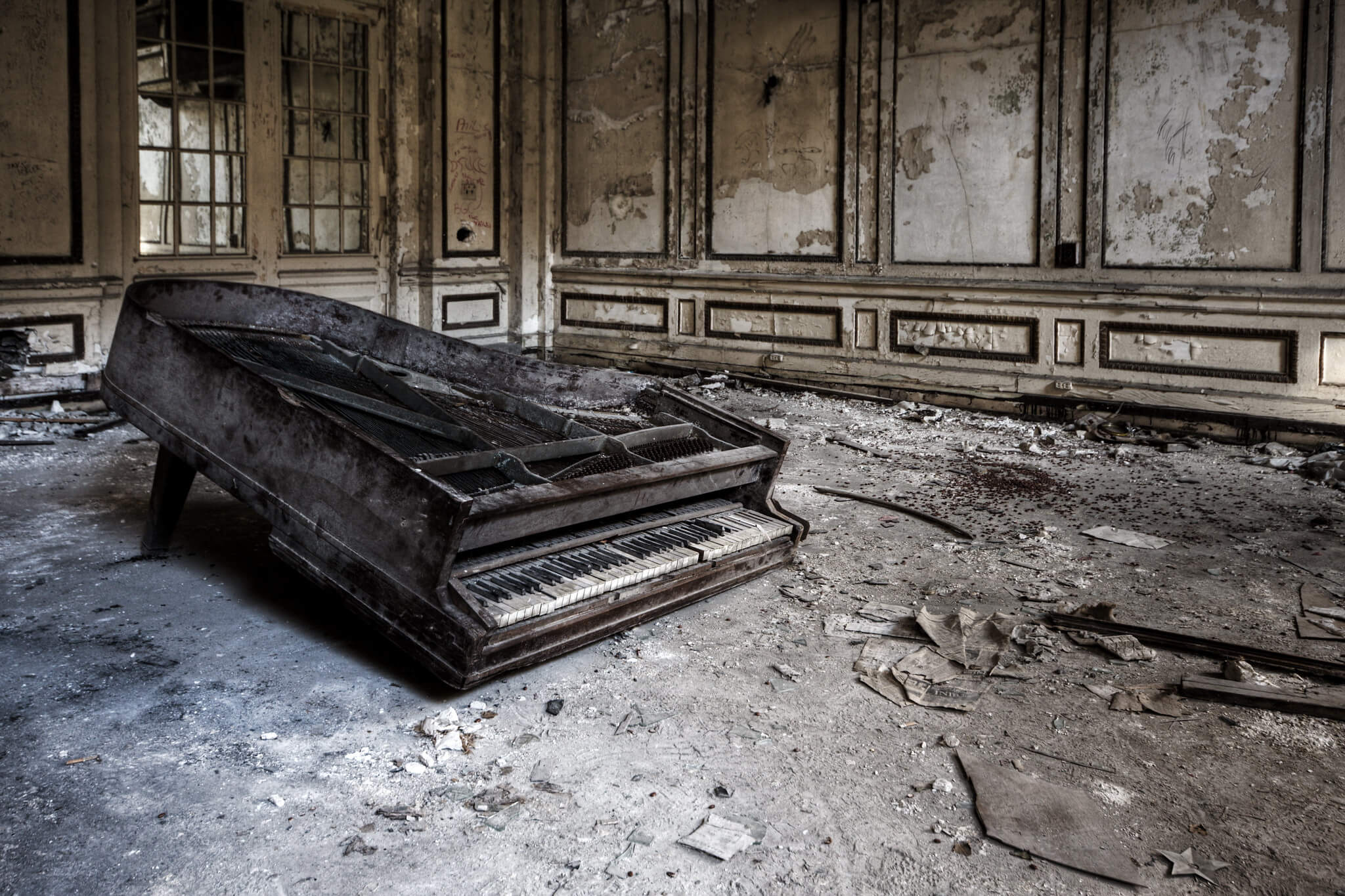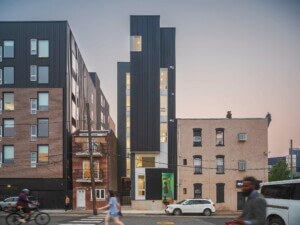Lee Plaza, a National Register of Historic Places-listed art deco landmark in northwest Detroit, will be resuscitated courtesy of $7 million in federal COVID relief funds after sitting vacant for 25 years.
The estimated $59 million transformation of the iconic-but-blighted Lee Plaza into a 117-unit affordable senior housing facility is the first development or construction project in Detroit to be financed in part by money received through the Biden Administration’s American Rescue Plan (ARP). Future redevelopment at the West Grand Boulevard site, including the creation of several dozen market-rate apartments on the upper floors, will follow the senior housing-focused first phase. The majority of the complex’s units will be earmarked for income-eligible residents.
As reported by the Detroit Free Press, Detroit received $826 million in ARP funds, the fifth-largest amount of any American city, and set aside $400 million of those funds for budget shortfalls. The remainder is earmarked for the so-called Detroit Future Fund, which includes a workforce training program, a $30 million roof replacement scheme for qualifying Detroit homeowners, neighborhood-based blight remediation efforts, and more. A resolution to allocate $7 million in ARP funds toward the first phase of redevelopment at Lee Plaza was approved by the Detroit City Council earlier this week.
“I came through here shortly after I was elected, and this was on the demolition list,” said Detroit Mayor Mike Duggan at a press conference held yesterday inside of Lee Plaza, which ranks as one of the last abandoned high-rises in the city. “I said this building is too beautiful, it’s got to be saved. But it’s been a long struggle.”
The latest chapter of Lee Plaza began in February 2019 when the city announced it would sell the tower to the Detroit-based joint development team of Roxbury Group and Ethos Development Partners for $350,000. A previous plan to revive the historic property by another developer collapsed in early 2016.
Construction of the first phase, with Fusco, Shaffer & Pappas serving as project architect, is expected to wrap up in 2024. As noted by the Detroit News, in addition to receiving low-income housing tax credits, the developers will also seek a historic preservation credit.

“Between Ethos and the Roxbury group, we have combined probably as much historic preservation experience in the city as much as any development group currently operating, and we’re very excited about this aspect of the project,” the Detroit News reported David Di Rita, principal of the Roxbury Group, as telling council members during the meeting earlier this week.
Designed by Charles Noble, the 15-story historic high-rise boasts a fascinating and sad backstory. It debuted in 1929 as a lavish residential hotel featuring a slew of ornate architectural flourishes, a grand ballroom, beauty parlor, lounges, and an extravagant, barrel-vaulted main entrance hallway dubbed “Peacock Alley.” Although regarded as one of Detroit’s finest high-rises during the early 20th century, Lee Plaza and its original owner, Detroit developer Ralph T. Lee, were quickly beset with legal problems after its opening and the property has subsequently changed hands numerous times over the years.

In the late 1960s, the I-shaped tower was converted into a senior housing complex and maintained that function until 1997 when it was shuttered by the city. In the years since the building has fallen into an advanced state of disrepair; many of its architectural elements, including its windows and pitched copper roof, have been stripped by scrappers.
Most famously, 56 of Lee Plaza’s terra-cotta lion heads vanished from the building’s cornice in the early 2000s. Not long after, six of the pilfered lion heads wound up being prominently featured at a newly built luxury condo development in Chicago. The Wayne County Sheriff and Prosecutor’s Office subsequently became involved in what Dan Austin of HistoricDetroit referred to as “one of the city’s most notorious architectural heists.” Long story short, the lion heads and a slew of other decorative sculptures nabbed from Lee Plaza were ultimately returned to Detroit and placed in storage with plans to reintroduce them into the building if it were ever to be revitalized.











